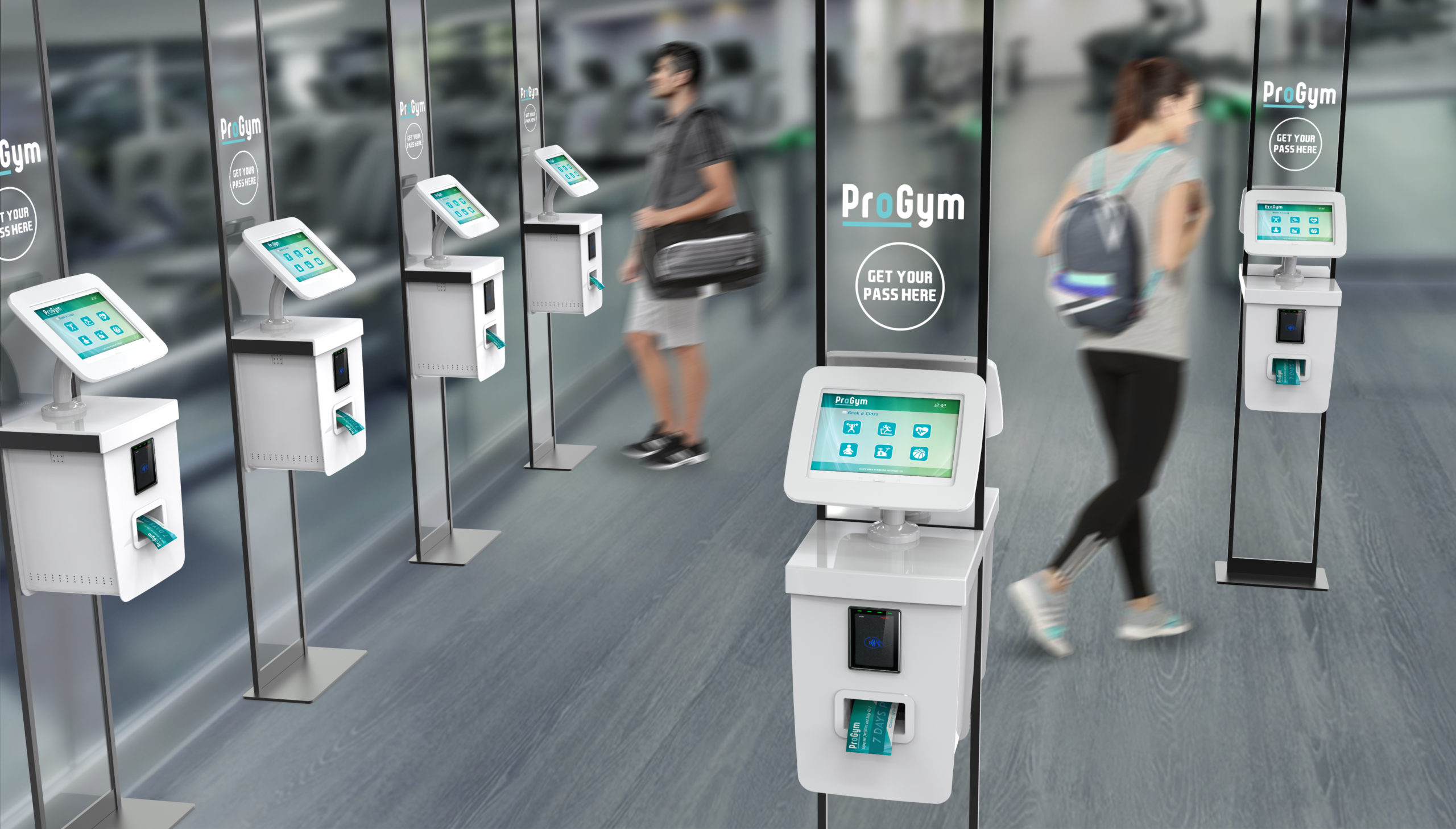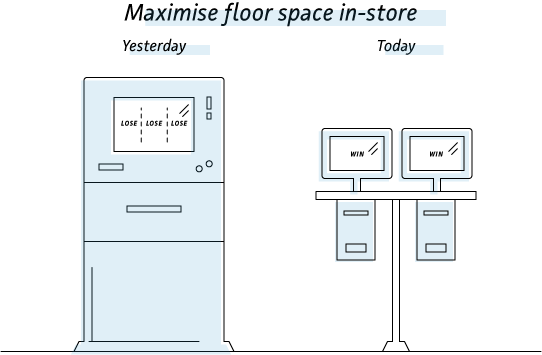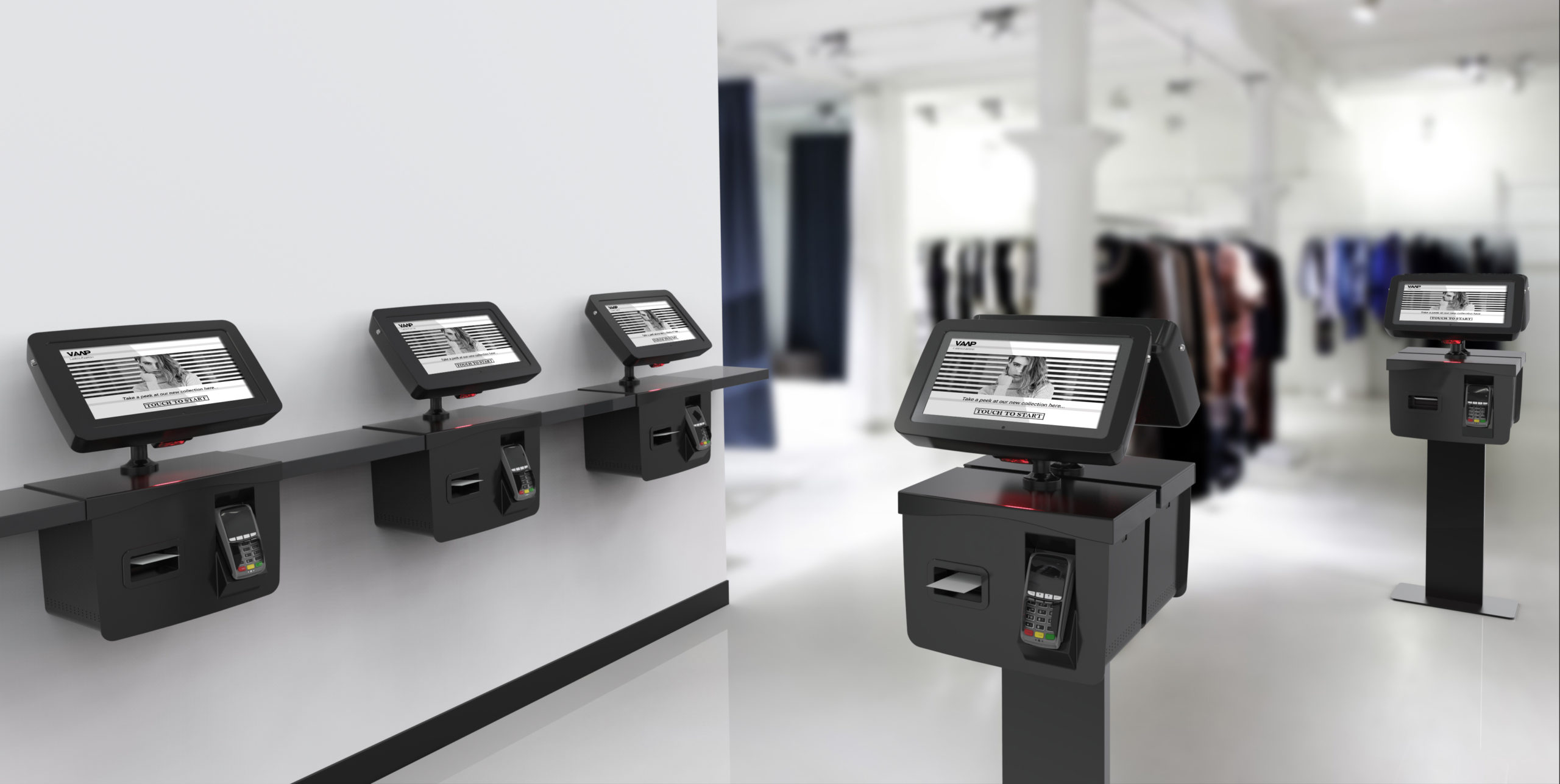The Journey Towards a Self-Service Society
Designing self-service technology for the future
Self-service is quickly becoming the norm and is expected by many consumers in a variety of different situations. Society has come to terms with self-service and its benefits are widely accepted for both consumer and business. Shoppers can save time, avoid human contact, maintain control and businesses can save money on staffing resources.
The only problem is that the self-service experience is not quite up to scratch with many retailers and businesses not embracing new technology quickly enough to keep up with consumer expectations.
The journey to get the masses accepting self-service was not so smooth, here we are going to have a brief trip through self-service history, look at today’s options and then look further into the future at how self-service will provide the ultimate customer experience. 
Self-Service: Not Such a Positive Start
People did not always respond to self-service in a positive way. With the start of the self-service revolution taking place after the second world war, many were resistant to this new way of life that seemed to be beneficial only to corporations.
When supermarkets first established self-service in the 1950’s, customers were presented with shopping baskets and instructed to collect their own goods. Unfortunately there was a fear regarding a lack of knowledge and understanding of what they were supposed to do.
Now in the 21st century the gradual transition of self-service towards a technology based solution was not a popular concept with consumers. With difficult interfaces and glitching software, it seemed to the user that the only beneficiaries of self-service were businesses.
Over time, improvements and breakthroughs in technology have allowed companies to create a better user experience with more intuitive software and engaging interfaces. This journey of constant improvement has won over many self-service skeptics with it now being accepted as an ordinary part of everyday life.
With automated technology performing tasks at double the speed of humans, people are now associating self-service with saving themselves time and money. From supermarket check-outs to express check-in stations at hotels, consumers now feel in control and empowered, with greater choice and flexibility.
Since the start of the self-service revolution, society has become more engaged with self-service and now customers know exactly what they need and instead fear that by reverting to interacting with human attendants, confusion and wrong orders could follow. From food orders in restaurants to giving a name when checking in at a hotel, consumers feel the need to double check that the waiter or receptionist correctly took down their details. With a self-service kiosk there is reduced potential for fear, as users are inputting their own requests and information, and feel in control over what to expect.
What consumers are asking for more and more often, are options and assurance that they will get what they ask for.
Tablet Kiosks: The Future of Self-Service
Traditionally kiosks are cumbersome terminals that are expensive, take up vast amounts of space, have costly maintenance contracts, are inefficient and look unattractive. Today consumers have high standards and will no longer accept a poor self-service experience, so businesses must look to the future, the future of the ‘Tablet Kiosk’.
Tablet kiosks are a cost effective solution to the traditional kiosk. They require minimal space, have a sleek design and are highly secure. They do not require high maintenance fees as they are simple to install and easy to maintain. Altogether, tablet kiosks provide a cost-effective and future proof solution for the kiosk market.
One traditional kiosk can be replaced by two tablet kiosks for less money and without taking up more valuable space.
Tablet and iPad kiosks are striking in design. The psychology of consumer behaviour is considered during the conception and design of the enclosures. They must be welcoming, and draw attention in a subtle manner, so that potential users are enticed and want to interact with the unit.
Tablet kiosks are extremely versatile and offer a variety of different business solutions when combined with OEM devices.
All of these different solutions require different devices. Whilst a car park kiosk may require a chip and pin reader, cash acceptor, change dispenser and ticket printer, an access control station may only require a biometric fingerprint scanner. The different self-service solutions change depending on the problem they are trying to solve.
imageHOLDERS are experts in the development of tablet kiosks within the self-service industry, and have created a modular kiosk which future proofs business needs. We have created a modular kiosk which has adjustable internal shelving to securely integrate a variety of different devices, from A4 printers to contactless card readers, ensuring that any collection of devices can be held securely.
Self-Service Payment Terminals
One of the biggest industries within the technological revolution is payment, with contactless and Apple Pay requiring vendors to constantly adapt. Alongside these developing payment types, self-service payment terminals are becoming the expected norm for any retailer. The space required for two checkouts, vs the space for up to 6 self-service terminals, promises businesses that their floor space is being maximised, whilst ensuring that the consumer feels their time is being appreciated with the option of an express check out.
As more and more retailers invest in self-service terminals, a wider range of consumers are interacting with self-service applications and are therefore more likely to utilise self-service in different situations. From government offices to local libraries, users are becoming less skeptical about filling in forms or returning books using self-service kiosks, thanks to the influx of self-service payment terminals.
Whilst it’s advisable to have an attendant in some scenarios, most situations such as car parking kiosks, do not require any assistance.Consumers are becoming cashiers, car parking attendants, banking tellers and more, thanks to self-service, and this new rise in control is proving popular with an increasingly security conscious society.
Mobile and Self-Service
Three billion people are connected to the internet by mobile and technology is now an expected element of any transaction. This ensures that the majority of users will not need any assistance when using self-service tablet kiosks, therefore the number of staff required is dramatically reduced.
With nearly two and a half billion smartphones in the pockets of consumers, it’s important that businesses take advantage of the potential which mobile provides. From pre-ordering your Starbucks order via their app, to paying with Apple Pay on iPhones, businesses are already merging online with in-store. By investing in apps which remind consumers of discounts or special offers, business can ensure that they are able to communicate with their customers at any time.
With loyalty schemes going digital, self-service tablet kiosks will always remember to upsell products and can also display personalised marketing to each individual user from the data collected. Now each customer can have a highly unique experience, whilst businesses are able to upsell products and collect valuable data about their customers and their purchasing habits.
What Industries Can Maximise Self-Service?
Self-service is a wide reaching solution and can be applied everywhere from interactive maps to car parking terminals, self-service isn’t just for payment points and check-in desks.
Any scenario which can be made more efficient and save on resources, can be achieved through self-service. Whether that’s checking in using an airport kiosk, dropping your car keys off for a service, or booking activities at a hotel.
The cost of a self-service kiosk is vastly less expensive than the hiring process, training and insurance of a single employee, and is available 24/7 to meet consumer demands. Whether it’s a reception desk check-in point, or a charity donation station, self-service is about self-sufficiency and empowerment for the user.
Self-Service: Benefits Businesses and Consumers
The capabilities which self-service provides through tablet kiosks ensures that both businesses and consumers are getting the most out of their experience. By using a stylish, simple and engaging tablet kiosk, businesses are able to invest in both their customers and their future. As the capabilities of technology increases, so do consumers expectations, and future proofing with a self-service tablet kiosk ensures that business are prepared for any new development.
For more information on how to integrate digital payments and contactless technologies into your business, talk to imageHOLDERS today. Call us on +44 (0)1202 892863 (UK) or +1 877 450 2172 (USA) or email [email protected].
This article was written for Kiosk Solutions and is published in the October/November issue. To see the original article click here.

